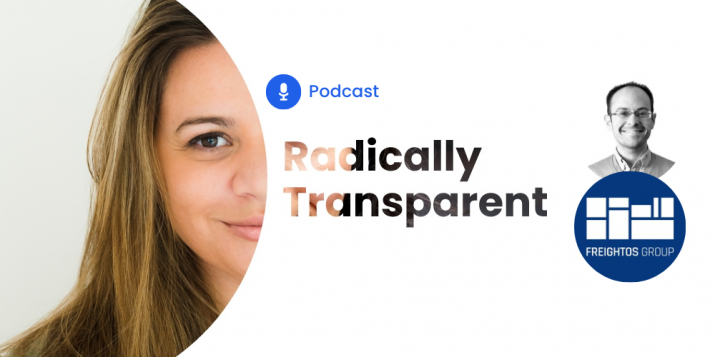
Social media is about creating dialogues NOT monologues
With the explosion of new marketing technologies and touchpoints implemented throughout different stages of the buyer journey, it has become more challenging for marketers to interact with their audience. This new reality gave rise to the “Engagement Economy” – a term coined by Marketo, which describes the idea that everyone and everything are connected.
The Engagement Economy sparked a discussion about the need for companies to become more customer-centric and for marketers, in particular, to deliver a meaningful experience. Steve Lucas, Marketo’s CEO, said it best: “Now more than ever, the only way to win the hearts and minds of your customers is to consistently deliver authentic and personalized experiences.”
And it makes total sense! As a marketer myself, I’m always startled by the ocean of content that’s flooding my inbox. Companies from diverse industries and regions are constantly trying to target me with irrelevant products and services: “download this”, “buy this”, “when are you available to speak”. If the subject line gives no indication that the company knows or understands me and my current needs, then I simply press ‘delete’.
This really makes you wonder: is this what marketing has come to – generic, impersonal, and irrelevant monologues that make you want to ignore the company?
Talking at your audience vs. talking with your audience
When it comes to the Engagement Economy, most B2B marketers are slow to adapt their social media strategy, and as a result, they risk losing their audience’s attention and loyalty – just as they’ve lost mine.
Although social media is where 33.5% of B2B buyers go to engage with a brand, it’s commonly treated as a 1-way channel for outbound marketing. Similar to email, the focus of social media lies in the need to convert the audience as quickly as possible, instead of engaging them in a meaningful dialogue.
To illustrate this point, consider some of the following two-way interactions:
- Encouraging questions and answers throughout a webinar
- Answering a prospect’s questions via live chat on a website
- Responding to a reader’s comments on a company blog
In all of these examples, marketers are taking their time to communicate with their audience; to build a two-way conversation. They’re not just running a webinar or writing a blog post to promote their ideas, they’re also encouraging audience engagement through comments, questions, and feedback.
So, how can you do the same on social media? How can you transform it from a one-way megaphone to a two-way engagement channel? Below are two major tactics for driving successful social media marketing in the Engagement Economy.
1. Encourage a conversation
When you write to your friend on Facebook, you expect a response? You expect to have a conversation with them. Similarly, if a prospect or customer messages your company directly or writes a comment on your latest post, you must engage with them by hitting reply.
But this tactic presents the challenge of scalability – if your company has over 100,000 followers, how do you manage the large volumes of incoming messages? Also, how do you ensure that the responses are coming from the right person?
If solving this problem allows you to create a more engaging buyer experience, then you shouldn’t think twice before looking into it. For starters, it’s worth mentioning that not 100% of your comments and incoming messages need to be responded to. It’s all about being able to track and filter meaningful conversations that impact your company.
This strategy may ring a bell for marketers who adopt social listening. But in this case, I’m referring to a slightly different strategy that takes social listening to the next level: social response management.
While social listening is the process of monitoring social channels for both industry and brand conversations in real-time, social response management is about providing proactive and personalized responses. It involves routing people’s comments and direct messages to the right team member in your organization.
For example, if someone asks you a question about pricing, you can easily assign this question to one of your dedicated salespeople. This way, you can ensure that every interaction with a prospect or customer on social media is handled in an efficient and seamless way.
Recommended for further reading
2. Create engaging content
Besides having a direct conversation with your audience, digitally transforming your social media marketing also involves showing your audience that you understand them. If prospects or customers have taken the first step to follow one or more of your social media pages, they expect to see content that aligns with their interests and habits.
Luckily, this doesn’t require an entirely new system. Most likely, you already have valuable social media data, which equals to a ton of social media intelligence on your leads and customers. All that’s left is to use this intelligence to target your audience with tailored social media content and messaging.
This social data should come from any of your existing tools, such as Facebook Insights, Google Analytics or your social media management platform. As such, you’ll be able to garner some of the following insights:
- Which content topics is your audience most engaged with?
- Are they engaging mostly with bottom-of-the-funnel content (e.g., blogs and infographics) or top-of-the-funnel content (e.g., webinars and case studies)?
- What type of media is generating the most engagement – videos, images, GIFs?
- Which time of day is your audience most engaged?
Examine your data and then adjust your strategy to align with the insights you gather. Share content topics your audience wants to see, not just what you want them to see. Post at the times when engagement is at its highest. Look at content types and topics that have garnered the most engagement in the past and publish more of the same.
Dialogue NOT monologue
Transitioning your social media marketing to fit in the Engagement Economy is as simple as implementing a handful of tactics and tools that encourage audience conversations and promote interesting content. And the best part about making this shift is that it makes your audience feel valued in the long-term and increases the chances of your message being heard.


